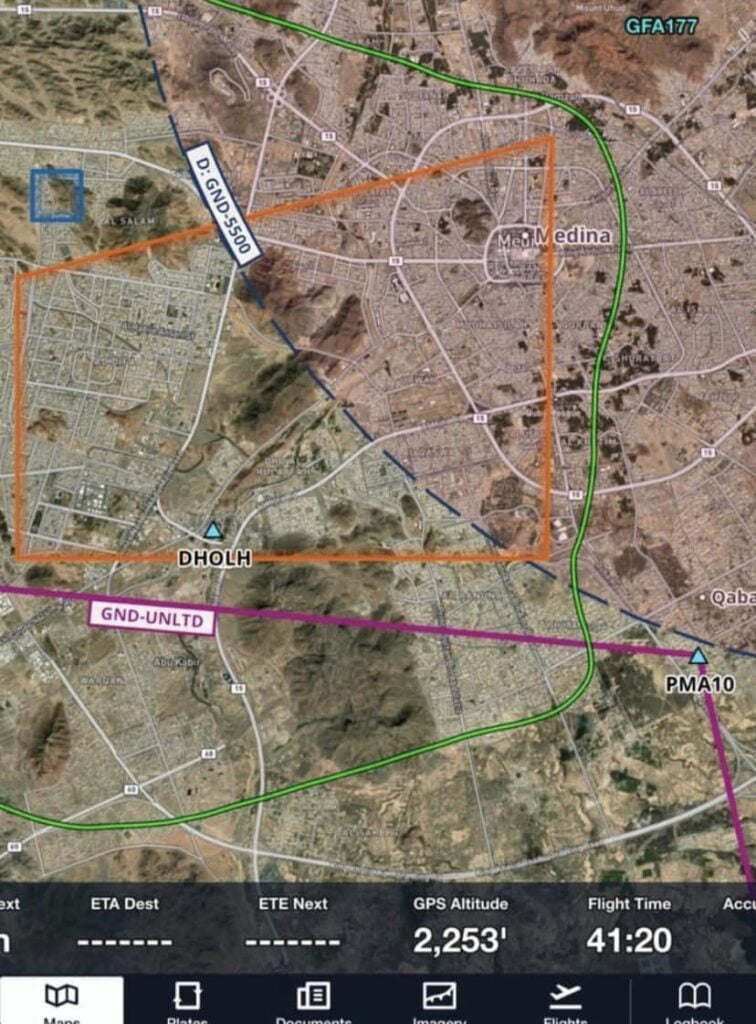Masjid Al Haram and Masjid Al Nabawi are the holiest places in Islam. To ensure the sanctity of these sites, aviation authorities have imposed strict no-fly zones around them.
These restrictions are intended to prevent disturbances, noise pollution, and hazards that could endanger the sacred environment. Airlines, pilots, and aviation authorities must work together to strictly adhere to these regulations.
Masjid al-Haram in Makkah and Masjid al-Nabawi in Madinah are considered the most sacred and holiest places in Islam.
Masjid Al Haram is home to Islam’s holiest shrine, the Kaaba, and serves as the center of the annual pilgrimage to Makkah, which attracts millions of Muslims worldwide.
The final resting place of the Prophet Muhammad (Peace be upon him), Masjid Al-Nabawi is of great religious significance and a place of deep devotion for Muslims.
Significance of the Holy Places
Al Haram Mosque, The Kaaba, believed to be the first place of worship built by Prophet Ibrahim (Abraham), is a symbol of the unity of the global Muslim community. Muslims also value the Masjid Al Nabaw in Medina.
It has great historical and spiritual significance because it contains the tomb of Prophet Muhammad (peace be upon him). The silence and stillness within the walls of Masjid Al-Nabawi make it a place worthy of worship and contemplation.
The no Fly Zone
To ensure the sanctity of Masjid Al Haram and Masjid Al Nabawi, aviation authorities have imposed strict no-fly zones around these holy places.

Flight restrictions over Masjid Al Nabawi and Masjid Al Haram are marked by designated no-fly zones marked with orange rectangles on the flight navigation map.
This airspace is strictly off-limits to aircraft and flying over this area without proper permits is prohibited.
By enforcing flight restrictions, authorities aim to ensure that potential disruptions, noise pollution, and other hazards that could endanger the sacred atmosphere do not affect the holiest sites.
This proactive approach not only ensures a peaceful and spiritual experience for Hajis, but also means a commitment to preserving the rich history and meaning of Masjid Al-Nabawi and Masjid Al Haram. It is important to adhere to these flight restrictions.
Airlines, pilots, and aviation authorities must work together to strictly adhere to regulations around Masjid Al-Nabawi and Al Haram. Violations can result in severe penalties, highlighting how strictly these restrictions are adhered to.
Radar monitoring, airline coordination, and close surveillance all play a key role in ensuring compliance and maintaining the sanctity of these sacred sites.
Bottom line
Flying over the Islamic sacred sites without proper authorization is strictly prohibited and adherence to the designated no-fly zones is essential.
These restrictions are intended to prevent disturbances, noise pollution, and hazards that may disturb the sacred environment.
By complying with these regulations, airlines, pilots, and aviation authorities demonstrate their commitment to respect the religious and cultural significance of Masjid Al Haram and Masjid Al Nabawi.


 WhatsApp Channel
WhatsApp Channel
 Instagram
Instagram
 Facebook
Facebook
 X (Twitter)
X (Twitter)
 Google News
Google News
One point needs clarification whether special permits are issued to airlines to fly in no fly zone of Harmain Sharif. Did authorities of Saudi Arabia issue flying permission in past to any airline?